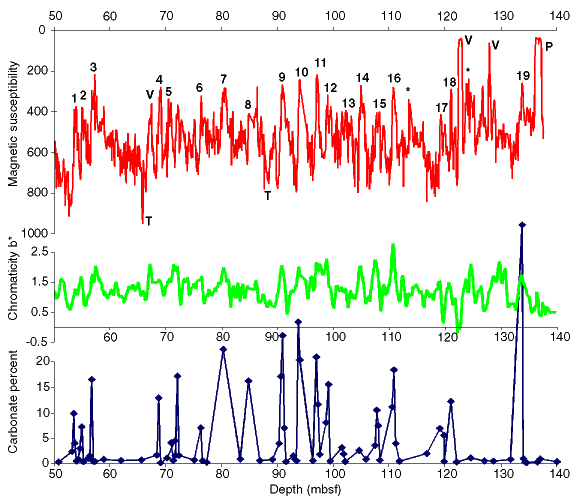Figure F8. Magnetic susceptibility data, chromaticity parameter b*, and percent carbonate for Unit II. Chromaticity parameter b* is smoothed (nine-point moving average). Low values of magnetic susceptibility (here, magnetic susceptibility is plotted inverted) and peaks in b* correspond to the foraminifer-bearing beds that show a high percentage of carbonate. The alternating, laminated facies within Unit II has higher and variable magnetic susceptibility, and lower and variable values of b*. Each magnetic susceptibility low associated with a foraminifer-bearing bed is numbered (numbers are not oxygen isotope stages), and two lows where foraminifer-bearing clayey silt could not be identified in the core are marked "*." Low magnetic susceptibility is also associated with voids in the core (marked "V") and the occurrence of pyrite in burrows (marked "P"). High susceptibility associated with Facies L1 is marked "T" for turbidite. The carbonate peak of 46.7% at 133.9 mbsf occurs within a carbonate-cemented silt bed.

![]()